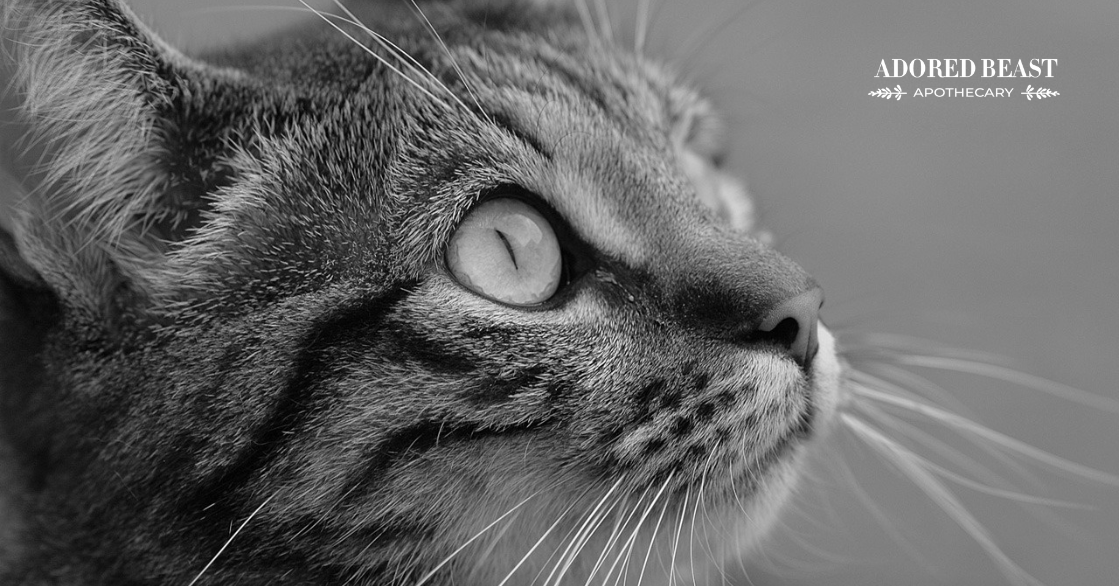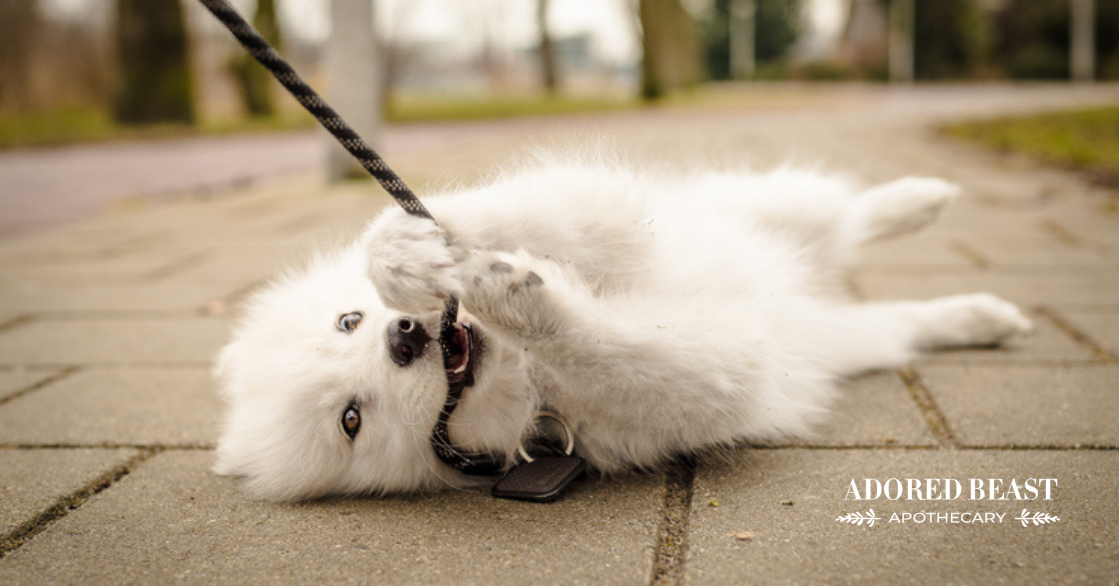At any age our animals are precious, but as they get older, and require a little more attention and compassion, they become even more so.
November is Senior Pet Month, and that means we’re focusing on how to provide our senior animals with all the care and love they need! Here are our top tips for supporting a senior cat.
Tips for Supporting a Senior Cat
Show your older cat some extra TLC with these tips for supporting a senior cat.
Learn to Recognize Signs of Pain
Our feline friends are really good at hiding their pain. They’re obviously not going to tell us that they’re not feeling well, and often the signs are really, really subtle. You have to learn to look for them to be able to address them properly.
Signs may include:
- change in regular sleeping habits (sleeping more or less, or in different locations)
- overgrooming
- vocalizing
- urinating or defecating in inappropriate places
- constipation
- hiding away
- not wanting pets or more clingy than usual
- restlessness
- weight gain or weight loss
- changes in eating habits
If you notice these signs, or believe your cat isn’t feeling tip-top, work with your holistic veterinarian. Have a wellness check done, with full geriatric bloodwork, including a full thyroid panel. It never hurts to have a chiropractor or osteopath as well – our cats can really benefit from this.
NOTE: If your cat does have any kind of kidney issues, learn to do subcutaneous fluids at home. This greatly decreases the stress on your cat of vet visits and can be life-supporting with this disease.
Keep Weight in Check
Senior cats may not be as active as kittens (although that’s not an across-the-board rule), so they may not get as much exercise. As a result, it can be harder for a senior cat to keep weight down.
This is doubly the case if your cat is in pain.
The most important thing you can do to prevent the pain from things like arthritis is to keep your cat at a healthy weight. As little as a pound or two of excess weight can significantly increase the pain of sore joints. It also puts more pressure on the organs, forcing them to work harder – which is not good at a time when they may not be in prime shape.
Watch food intake as well. If your cat is carrying extra weight, work slowly to help her shed those extra pounds. It’s healthier all around.
IMPORTANT: Cats aren’t like dogs – you can’t do anything extreme with cats with food. You can’t quickly switch their diet, they can’t be fasted, and you can’t significantly decrease their food. If cats get stressed around their food habits, many will quickly stop eating all together and a life-threatening process can quickly happen called hepatic lipidosis.
Daily Mental and Physical Exercise
To keep ours cats’ minds sharp, and bodies in good shape, exercise is essential. Think about different ways you can work on both. Get your cat some new toys, ones that will help encourage play. Make her work for treats, either with puzzles, or placing them around so that she has to work for them. If she’s not motivated by treats, consider organic catnip! And play with her! That will help encourage her to move.
Consider Your Cat’s Access
Make sure your cat can easily access anything she needs. If she needs to take the stairs to get to her litter box, but stairs are somewhat difficult, consider moving it to another location she can get to more easily. Additionally, if your current litter box has high sides, consider switching it out for one with a scooped opening that makes it easier for her to get in and out of.
If your cat is having trouble jumping to her favourite high surfaces, add steps or ramps for access. A senior cat may not be able to jump as high as they once could. You can help by breaking up a jump into manageable steps. For instance, put a footstool between the floor and your cat’s favourite chair to make things easier.
For better grip, place things like yoga mats or carpets around on the floor or on the stairs. This will help with stability and help prevent slips and falls.
Comfort is Key
Just as we want a little more padding as we get older, so too do our kitties. They may also need a little extra warmth. If your cat has a favourite bed, add some extra padding with towels or old blankets. Create a warm corner with lots of cushioning where your cat can snuggle in and stay cozy.
In the winter, consider a pet heating pad (not a human one) – these either use your animal’s body heat, or keep the temperature at a safe range.
Grooming Assistance
Senior cats can often benefit from some help when it comes to grooming. This is particularly crucial for longhaired cats who become uncomfortably matted. Gently brushing or combing your older cat can remove loose hairs and stimulate circulation and sebaceous gland secretions.
Our founder Julie says be super conscious of litter in general. She never uses clay-clumping litter, and only 100% natural and completely non-toxic. As they get older, if they have arthritis in their back or hips, they may not be able to get into a good position to pee or poop and can get more litter on their feet, which they’ll groom off – you don’t want them eating chemical-filled litter!! You can also help them by wiping them off too.
IMPORTANT: If you’re going to change the litter, think of it like food. Do it gradually – an all-at-once switch out may result in stress urination outside of the litter box or bladder infections because they won’t go at all.
Pay Attention to the Litter Box
We can learn a lot by keeping a close eye on what’s in the litter box. Do her poops look normal? Are they harder or softer than normal? More or less frequent? Even small changes can be signs of a larger issue. They may be fixed easily with a diet change, or may need a little more help. It never hurts to speak to your trusted veterinarian if you notice changes in the bathroom.
Supplements to Add
When it comes to supporting a senior cat, there are a number of different supplements you can use, either daily or in rotation:
- Joint Support – this has to be homeopathic (Jump for JOYnts) or specifically formulated for cats. Collagen-rich foods are ideal as well (like bone broth mixed into their food).
- Pre and Probiotics – you want to be supporting the immune system (species-oriented and ones that help to fight inflammation)
- Phytoplankton – rich in antioxidants and amino acids (and cats usually love the taste – an added bonus with kitties for sure!)
- Omegas – rich in EPA and DHA – help support the brain, the joints, really the whole body
- Medicinal Mushrooms – specifically turkey tail (especially good for gut and immune health) andlion’s mane (really great for cognitive function)
- Water – water is so important for cats. Many cats don’t get enough moisture, so fresh, clean (NON-ALKALINE) water is so, so important. All of Julie’s geriatric cats drink from raised, wide-rimmed water bowls.
- Raw or Home-cooked Food – wet (canned) at the very minimum. Adored Beast just can’t support the feeding of dry food as a cat’s main food – Julie has seen too many negative health issues with it over the years.












![[RESEARCH] Is Herbicide Safe for Dogs?](https://blog.adoredbeast.com/wp-content/uploads/2025/06/herbicides-safe-for-dogs-103x55.png)